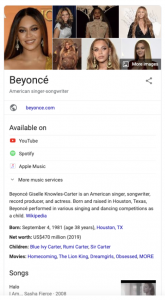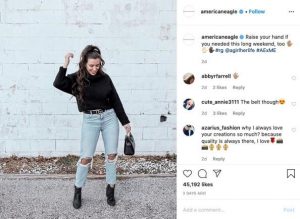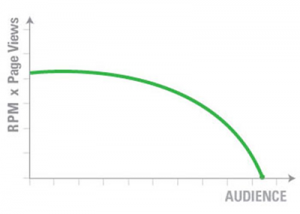
Great job – you’ve written a blog and are ready to share it with the world. Now all you need to do is cut and paste it into your website’s backend – right? Not so fast! Always, always make sure to optimize your blog before hitting publish.
At Bop Design, we love content marketing. We love working with our clients to produce high-quality articles that their target market finds interesting and informative. However, we also want to make sure their target market can find the blogs, clicks on the blogs, and wants to stick around to see what other types of blogs are on the website.
This is where five simple search engine optimization steps come into the picture. The basic idea behind SEO is to get your high-quality content in front of the right audience AND get them to engage with that content. There is no trickery involved, but there is an element of finesse. Without further ado, here are five SEO tips for your next blog post.
Create an Engaging Title
We aren’t knocking the tried and true titles that start with “How to…” or “What to do…” We think these titles have their place, especially when they engage the audience. Content marketing doesn’t mean you have to be coming up with the most dramatic, creative titles. In fact, it simply means the title should be engaging. If your clients want to know how a particular service works or why they should consider product A over product B – use that in the title!
Put yourself in your prospective client’s shoes. Would you want to click on that article and read more? Or would you scan past it onto something more relevant and engaging?
Include One to Two Keywords/Phrases
Gone are the days of keyword stuffing. A better strategy is to focus on optimizing a blog post or web page for one term. Other relevant keyterms will naturally occur in the text if it is well-written, so don’t worry about including all your keyterms.
Additionally, we still recommend incorporating keyterms or phrases in your titles. However, if the title sounds too contrived with the keyterms, it’s OK to remove them – but you should consider including them in at least a few blog titles. Don’t forget that the search engines still bold keyterms from a search in the results (see the image below).

Add a High-Quality Photo
A visual element added to a blog helps to not only break up text on a page, but is also a great way of supporting the thoughts and ideas presented in the blog. Be sure to choose an image that is high-quality and related to the blog topic. Remember that while images don’t show up in search engine results, they do appear with posts on social platforms like LinkedIn, Facebook, and Twitter. Research has found that visuals increase a user’s willingness to read a piece of content by 80% (Source: HubSpot). If you want people to read your blog posts, make sure to include a photo.
Beware of taking images from the internet without permission. Copyrights do apply to images and that includes website usage. Save yourself a future headache or large monetary fine by either purchasing images from sites like iStock or sourcing copyright-free images from sites like Canva.
Link to Relevant Articles or Web Pages
If you’ve had a content marketing strategy for a few months or longer, you likely have a range of blog posts on your website. However, it’s unlikely that a user is going to search through all your blog posts to read relevant articles. Make it easy for them by linking to other relevant blog posts. We typically aim to include at least three links in each blog post, but that number can be higher or lower.
Internal linking is important to SEO for several reasons. It builds a network of similar pages on your website, increases your visitors time on site, and ups the number of pages each visitor views. All of these are positive indicators to search engines that your website is providing useful information for visitors – and increases the likelihood your website will rank in the results pages.
When linking to other articles, always ask yourself if the article is relevant and provides value. Keep in mind that you won’t be linking to articles on the exact same topic, but if someone is interested in how a particular service works, they may also be interested in pricing for that service, what the benefits of the service are, or case studies on that service. Don’t just link to random articles willy nilly, since that won’t provide much value for the reader and they will likely avoid clicking on other links if they think they are spammy.
Draft an Enticing Meta Description
Whether or not you draft a meta description for your blog post, one always appears in search results. Isn’t it better to have control over what that description says?
Earlier, I mentioned that search terms are bolded on the results page. For this very reason, we INSIST on including keyterms in blog meta descriptions. It’s not advice, it’s a best practice. If your article is well-written, it is a snap to write an enticing meta description that engages the searcher and invites them to click on the blog post. Check out the snippet preview of a meta description below.

This meta description not only includes the keyterm (web design), it’s engaging. It asks a common question that our clients have and then starts to provide an answer. It’s your two-line elevator pitch to get your target audience to click on your blog post. Stay away from sensationalism or bait-and-switch techniques since those will boost your bounce rates and reduce the time on site.
There you have it: five easy SEO tips for your next blog post. Questions about search engine optimization and how it fits into your marketing strategy? Contact us today for a personalized consultation.
Digital & Social Articles on Business 2 Community(146)








